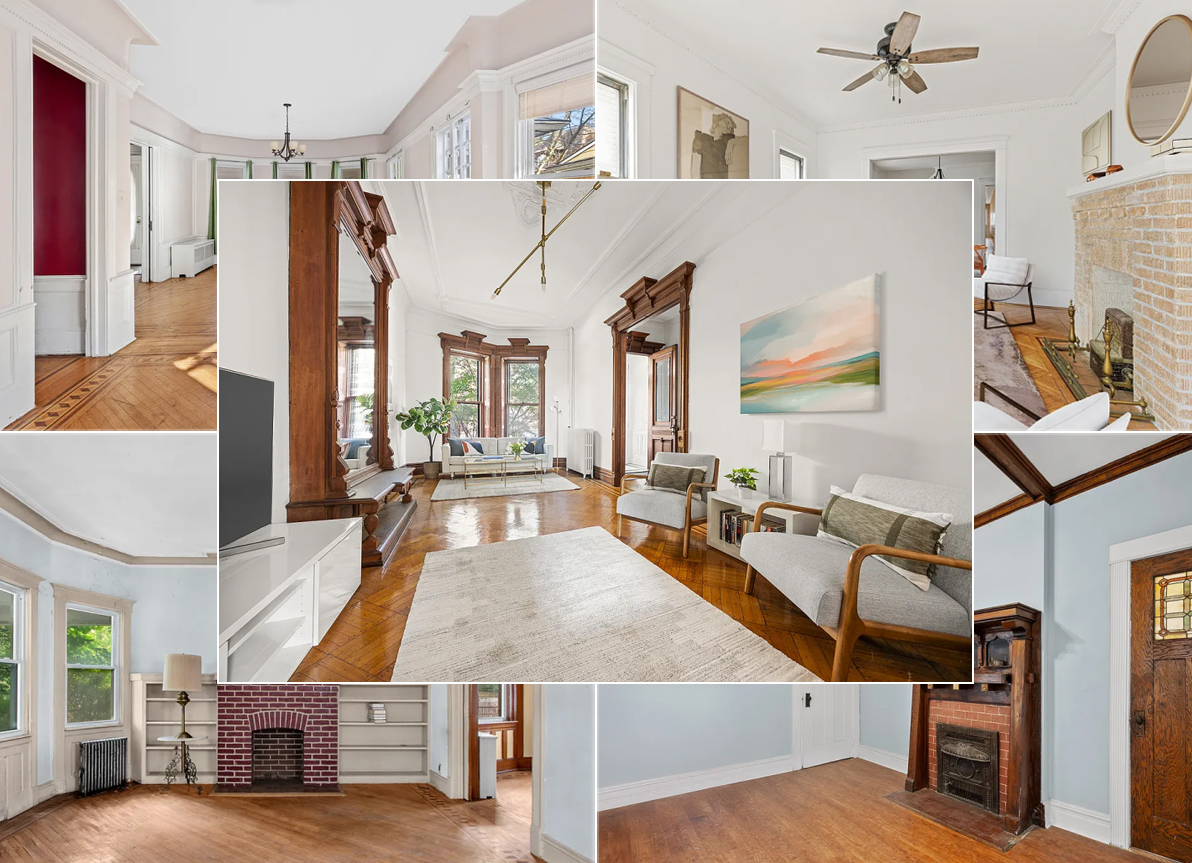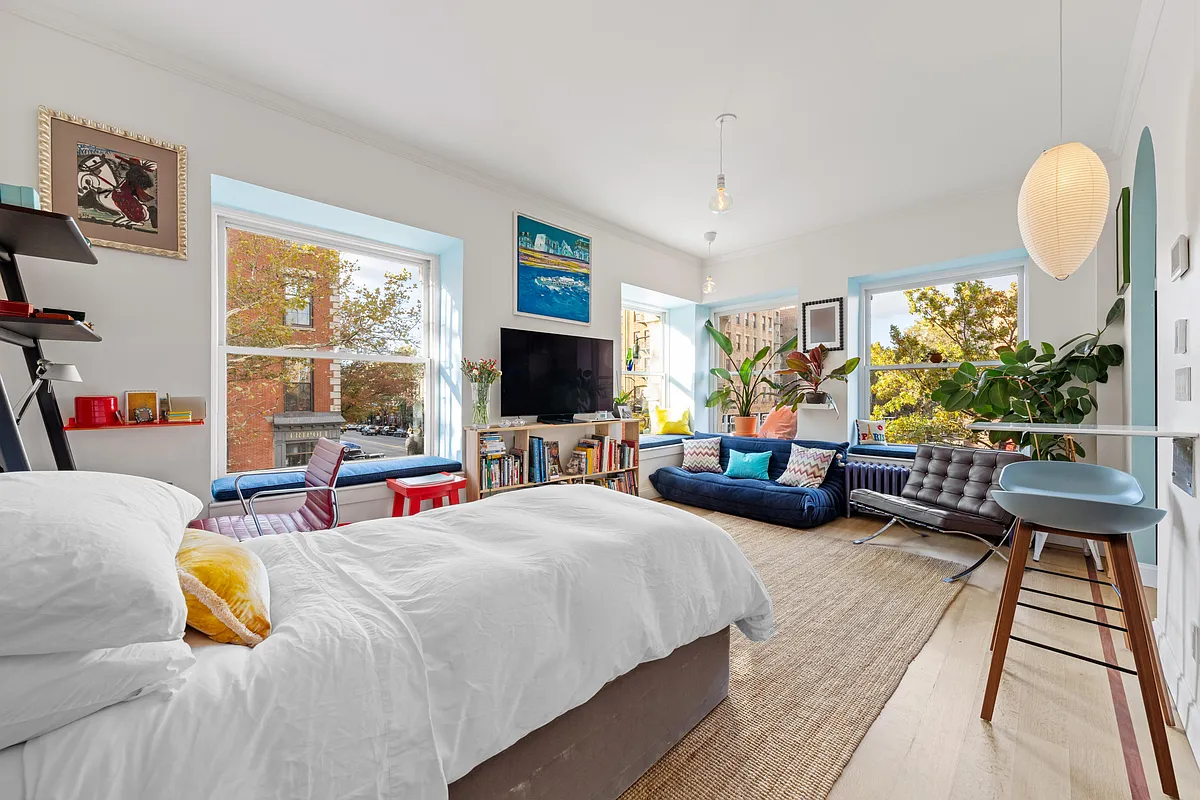PLG: Pump Up The Volume, Dance, Dance
Despite the best efforts of our resident troll (who gets more insane every day), all signs point to boom times in Prospect Lefferts Gardens. Of the five houses listed currently on Brown Harris Stevens, for example, three are in contract (including this place that has been on the market forever) and another (the Ocean Avenue…


Despite the best efforts of our resident troll (who gets more insane every day), all signs point to boom times in Prospect Lefferts Gardens. Of the five houses listed currently on Brown Harris Stevens, for example, three are in contract (including this place that has been on the market forever) and another (the Ocean Avenue house featured in OHP two weeks ago) is tied up in a bidding war somewhere between 5 and 10 percent over ask. One reader who hit a bunch of the open houses this weekend said they were crawling with young couples priced out of Clinton Hill and Fort Greene and drooling at the comparatively low prices and proximity to the park. (New York Magazine was way out in front of this one back in ’05.) If you’re a long-term believer in Brooklyn, it’s hard to see how you can go wrong with PLG. But…are prices outpacing the reality of infrastructure, amenities, etc. or is the rest of the world just waking up and coming to its senses? (We would encourage people to sign in for discussions on this one as our little PLG toad will most likely be firing away full throttle in his best efforts to disrupt civil discourse.)
Photo from Planet PLG 2006 house tour slide show.





Dan, you wrote:
“I fail to believe, however, that it would be impossible to create better schools in poorer areas because the kids are not as well prepared and the parents are less involved than in wealthier neighborhoods.”
You would be wrong. Until you’ve been in the company of large numbers of kids who’ve been poorly socialized, it’s hard to imagine.
You wrote:
“I also disagree that schools in poor areas get the same degree of funding as those in wealthy areas.”
This is a tricky claim. Some schools can do far more with much less. Take Stuyvesant High School. The per-student expenditure at Stuy is about $9,000 a year.
But the per-student expenditures at the worst performing high schools in the city are well over $12,000 a year.
Where does the money go? Lots of places. Security is a big expense at many schools and a small expense at some. Meanwhile, there are layers of former teachers who are have become non-teaching employees at many of the worst schools. The classes may be huge, but part of the reason is due to the various schemes available to teachers who want to stay in the system but get out of the classroom. Becoming some form of “coach” is one gambit.
Dan, you wrote:
“There are exceptions (PS 217 in Brooklyn, for example – where 81% of kids are eligible for free lunch – has great resources) but in general you will not find the same equipment/resources/programs in a public school in a wealthy neighborhood as you do in a poor neighborhood.”
The school system is a bureaucratic monopoly and its operation owes much to the management skills developed in the former Soviet Union. There are many black and gray markets within the official system.
The “free lunch” program is one of them. Schools are supposed to document the eligibility of kids who receive the “free lunch.” Like all kids attending public schools, my kids have brought home the forms. We’ve returned them noting no free lunch is necessary. Nevertheless, I noticed that one school attended by one of my kids had a “free lunch” population of nearly 100%. This figure defied reality.
It was obvious the principal was inflating the “free-lunch” population to bring more funding to the school. Who can blame the principal?
There are other accounting gimmicks schools use to increase funding. There are federally funded tutoring programs that operated at many troubled schools.
One of the ironies is that teachers having little success in the classroom are then hired at good rates to work in the after-school programs to take a second shot at teaching the same kids.
Then there’s the Learning Leaders program. It’s a volunteer organization of 14,000 adults who tutor for FREE at city schools.
But one factor separates the better-funded schools from the lesser-funded schools — parental fund-raising activities.
PS 321 has collected revenue from the weekend flea market in its front playground for decades. But there are hundreds of schools that have no chance of earning free-market cash with the same success as PS 321.
Schools can improve pretty quickly. My daughter is now in 5th grade. When I was looking at schools, PS8 in Brooklyn Heights was a disaster, PS11 in Clinton Hill and PS20 in Ft. Greene were not doing well, and even PS107 and PS154 in Park Slope and Windsor Terrace were not considered good schools. Now all of them are good and improving.
The same will happen to at least some of the schools in PLG, Prospect Heights (PS9 is on the way), Crown Heights, and Bed-Stuy once a critical mass of parents committed to their neighborhood schools decide to push for improvement.
Public schools get better when parents who live near them send their kids there. If you wait for someone else to do the work for you, it will never happen. Period. Doesn’t matter if it’s PLG or Park Slope.
The standard answer to this is: “Well, I’m not willing to force my child to be a social experiment.” That’s usually BS and a false choice. In most Brooklyn neighborhoods that are (like PLG) largely middle-class or above, your child will not be in physical danger, nor will his or her options in life be ruined by going to the public school. It just means you will have to get off your ass and do more work — by volunteering at the school and maybe by involving your child in more enriching activities outside school to make up for extras the school doesn’t have. But a lot of parents can’t be bothered to do that.
It amazes me how many people make populist arguments for moving to a neighborhood like PLG (I want to live somewhere diverse, I don’t want to live with a bunch of homogeneous rich yuppies, I want a tight-knit community)–then immediately follow that up with, “And you can always send your kids to private school.”
David, you wrote:
“Public Schools are good in neighbohoods where a majority people/parents are committed to really educating their kids and are also sending them to the public school.”
David, if by public schools you mean those serving the K-5th grade population, then your statement is true.
The trouble starts in middle school when kids are no longer attending schools serving only the above-average neighborhoods.
High school is worse. While there is endless preening and crowing coming from the Park Slope crowd of PS 321 parents who inundate that school and get the results their intense involvement demands, you only have to walk a couple of blocks west on 7th Avenue before you get to the new/old John Jay high school.
Having had the extreme displeasure of working there briefly, I can tell you no responsible parent should let a kid attend that school.
My wife grew up in Park Slope on 3rd St and never attended 321. Neither did her three siblings. Private school all the way in those days. They moved to PS in 1960.
The residents of PS do not send their kids to the new John Jay, which is the old John Jay with a name change. Same clowns enrolled.
Meanwhile, there are no gifted programs in PS, as far as I know. They are the escape hatch for people in most neighborhoods. If you don’t know about them and you have kids approaching school age, start learning.
While the hysteria of admission to the Eagle and CIG programs does not create the suicidal agonies felt by parents when their three-year olds are rejected by the Harvard-feeding pre-schools in Manhattan, there’s reason for concern.
The link to the Papa and Sons Market in PLG and its focus on food is even a little funnier when you consider the name of reporter: Lisa Chow.
http://www.wnyc.org/news/articles/74974
I agree that Ditmas is further along the way with gentrification that PLG. Cortelyou has more amenities and the area is safer.
Don’t know much about the market right now, but I can offer that a 4-storey on Macon Street in Bed Stuy (same cross streets as the Halsey house) just sold for $900k. That said, I have no other details so it may not be germane to this listing, although I do think Halsey is a bit overpriced for a 3-storey.
“, I appreciate that it is hard to accept that my house is worth about 10% less than it was 3 or 4 months ago-”
I forgot what the phenomenon is called but it happens with people buy stocks too – they can’t accept the idea that they are selling it for less than what they paid so they hold onto it until the price diminishes to nothing (i did that during the dot com boom, fortunately only with a BS ameritrade account).
on the other hand some of the listings are only on the market a few days, like fort greene studio for 250K – 8 days or something like that.
The market will drop more before it rebounds. By and large, these listings seem overpriced compared with much of what is out there now. As an owner, I appreciate that it is hard to accept that my house is worth about 10% less than it was 3 or 4 months ago–that’s a lot of money to let go of. But looking at what is selling and what is not selling, it seems clear that if I really want to sell my house I’d have to accept a good deal less then I had expected. The bright side of course is that whatever I’d be trying to buy would cost less too, so in the end it doesn’t matter.
I’m pretty sure that in the fall all of those houses that have been sitting on the market since late spring/early summer will get big price reductions–and finally sell.